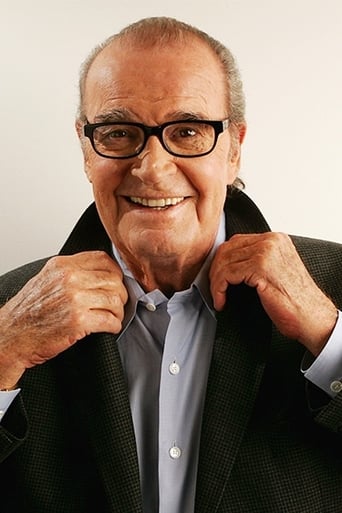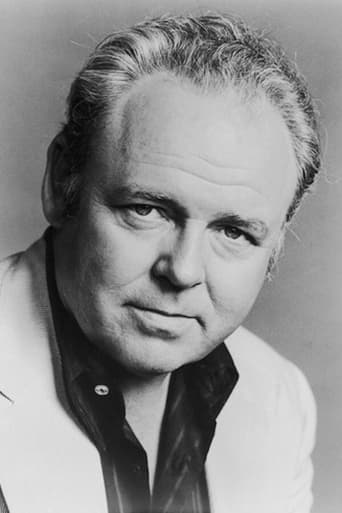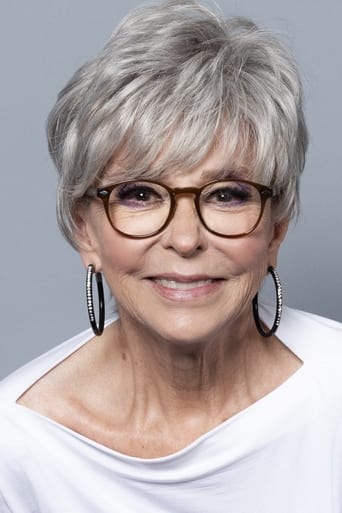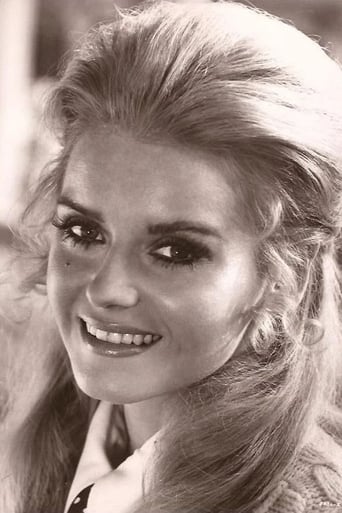Pluskylang
Great Film overall
Console
best movie i've ever seen.
Aiden Melton
The storyline feels a little thin and moth-eaten in parts but this sequel is plenty of fun.
Kien Navarro
Exactly the movie you think it is, but not the movie you want it to be.
secondtake
Marlowe (1969)While not a great one, this is an unusual version of Philip Marlowe on film. James Garner is an odd choice in a way, but he's handsome and charming. The photographer, Bill Daniels, is a stalwart from the classic years of Hollywood, and it shows, with nicely filmed scenes (in color). Daniels is famous as Garbo's main photographer, if that gives an idea of his long lineage.It's definitely 1969. New Hollywood is here, and there is a certain cheese factor that is part of the game, and not in the best ways. And the story itself is just not Raymond Chandler's best. Director Paul Bogart does his best, but for a comparison of a noir crime update, you might prefer the wonderful "The Long Goodbye" from 1973.But here we are. Garner is really good, in fact, and if not a Humphrey Bogart type, that might be really appropriate. Still, he's indifferent to pretty women until he isn't, he drinks, he's sarcastic, he is appropriately weary. Here he smokes a pipe, and he remains interesting. There is (for me) a simple appeal to the sets and the time it was shot. It's a crazy time in US history (great crazy). Everything is updated—there is no sense of recreating the 1940s, but rather of just setting the old story (from the 30s) into the new world.There are some fun curiosities, like Carroll O'Conner (the leading male in "All in the Family," which started the year before)—who isn't quite convincing as a tough cop. And the gay hairdresser played by Christopher Cary. And the side actor who does karate on Marlowe's office (for real) by the name of Bruce Lee (in his first American film). And two beautiful women (as usual) who play more pithy parts than you'd expect (clever or strong) until, of course, the stripper scene at the end. One of them, the fabulous Rita Moreno, had a continuing career with Garner in the "Rockford Files" for t.v. And finally another William Daniels (unrelated) who played Dustin Hoffman's dad in "The Graduate" two years early, and who is so different here you might not recognize him.Okay, so what ends up happening is a weird mix of humor and cleverness. The movie really wants to entertain, and yet it keeps inside the hard edged world of classic 1940s noir with references to tough guys and ice picks in the neck. It has almost absurdist humor and then it seems (somewhat) to want to take the crime and the criminals and the sleuthing seriously. It doesn't quite jive.Blame the era, maybe, but watch "Klute" or other detective yarns from the era and you can see an opportunity that went astray. I enjoyed it thoroughly, but only by kicking back. The story is a bit jumbled, either at its root or in its telling, but I think they thought viewers would enjoy the whole situation and all these interesting actors at work. It only goes so far.
utgard14
A young girl from Kansas hires Los Angeles private detective Philip Marlowe to find her missing brother. Marlowe's investigation leads to two dead bodies and a blackmail plot concerning an actress. Decent adaptation of the Raymond Chandler novel "The Little Sister," updated to the '60s. Garner's not an ideal Philip Marlowe but he's charismatic and enjoyable to watch. He has good chemistry with Rita Moreno, who steals every scene she's in. Bruce Lee has a small but memorable part. Carroll O'Connor and Kenneth Tobey are good as a couple of cops easily frustrated with Garner. A little too mellow and lacking grit for a hardboiled detective story, though it's still entertaining. More Rockford than Marlowe. A minor quibble: there's a scene late in the film that takes place in a wooded area but is very obviously filmed on a sound stage. I probably wouldn't have thought twice about it if the movie had been made even ten years earlier but for a 1969 film it was very noticeable and fake.
mgtbltp
It's all about cool, cool that aura of quiet intensity along that ever changing cutting edge balancing between conservative and excess, the spark between new and old, you know it when you see it. William Powell had it, Noir icons Bogart, Dick Powell, Mitchum, Conte, Andrews, Ford, Holden, and Hayden had it. James Garner as Marlowe displays one of the last vestiges of classic, big city, private eye cool, surfing the counter culture tsunami of the 60s. Yes, other P.I. depictions will follow, the majority on TV, but they will be diluted and tainted by the sea change of the Age of Aquarius, but they will be written quirky, cutesy, and PC. The only other film P.I's that have the classic cool in contemporary settings are Paul Newman's Harper films, Armand Assante in I, The Jury, and possibly Elliot Gould's turn as Marlowe in The Long Goodbye, and Gene Hackman as Mosby in Night Moves.Right out of the chute we are dropped both visually into Marlowe's current case in the title sequence by the use of a nice dynamic camera aperture motif that reveals multiple candid papparazi/surveillance photos, and audibly by a bubblegum style pop tune from the silly side of the commercial sixties. Titled "Little Sister" (sung by Orpheus) that ties the film to Raymond Chander's novel "The Little Sister" The tune itself then morphs into a tinny sounding diegetic song blaring from the radio of Marlowe's top down Dodge convertible. The car rolls along, and only in southern California, a horsehead oil pump studded beach, and up to a peace sign and flower power festooned hippie hotel called The Infinite Pad. Jammed into the chrome barred appointments of the dash is a photo of Orin Quest, the wayward missing in action brother from some hicksville Kansas fly speck who blew town down Route 66 in search of kicks. Marlowe wades through the throng of stoned out denizens and into the mangers office replete with posters, burning incense, and love beads. Marlowe soon finds out that he's in deeper doodoo than the $50 dollar retainer chump change case warranted.So how, you may ask, does a knight errant loner like Marlowe survive in a world of full page add, multiple operative, private investigation agencies? Well, he sublets half of his shabby suite of family-hand-me- down furnished offices to a beauty college who's ex-pat Brit proprietor doubles as an answering service/receptionist. He is good for a few chuckles. Cinematographer William Daniels (Brute Force, Lured, The Naked City) achieves a subdued almost laid back noir-ish style, photographing sleazy late 60s LA in a way that emphasizes the thin veneer of "new" that cosmetically covers the same old decay, its just Day-Glo painted now. Noir archetypes such as the Bradbury Building, and Union Station provide a cinematic memory link to classic film noir, while modern apartments, cloud club panoramic restaurants, the Hotel Alvarado and Sunset Blvd. strip joints anchor us to 1969. The use of split screen both advances the story line and occasionally provides a bit of humor. Another segment at a TV studio juxtaposes a throwaway modern dance routine along side one of the 20 Greta Garbo films that Daniels is famous for. Garner disdains the dance number to a TV exec telling him that the Garo film is the real entertainment.1969 contemporary Marlowe is a cool level headed professional, efficient, witty, and generous he even has a sleep over gal pal who works at the DMV who he also pumps for information. He eschews fedora and trench coat for sunglasses but still smokes a pipe and drinks bourbon.The stories catalyst is Orfamay's search for brother Orin and turns convolutedly into something else. Gayle Hunnicutt is Mavis Wald, a prominent TV star billed as "America's Sweetheart" an almost auguring like reference to Mary Tyler Moore & her show by the same name. Marlowe's involvement shakes things up enough to get various seemingly un-related individuals getting caught in a vortex with bodies piling up. Watch for Bruce Lee trashing Marlowe's office. The repartee between Carroll O'Connor and Marlowe. The sequence at Union Station where a woman is caught sitting at a lunch counter between Marlowe and Orfamay where they update all the skulduggery that has taken place the various facial expressions she displays are hilarious. This is a reference to a similar set up in The Dark Corner where Mark Stevens and Lucille Ball are conversing while a ticket booth girl overhears them.Fellows shines as Orfamay. Jackie Coogan is good as shifty Grant W. Hicks. George Tyne is a hoot as as the Hotel Alvarado house dick. Rita Moreno sizzles as stripper Dolores, doing a very sophisticated striptease routine that's low on tease and high on strip. It makes you think of what may have been if Hollywood had not been shackled by the Hays Code. Think of the strip routines of Rita Hayward in Gilda, Adele Jergens in Armored Car Robbery, Anita Ekberg in Screaming Mimi, Robin Raymond in the Glass Wall, Barbara Nichols in Beyond A Reasonable Doubt, even Kim Novak in The Man With the Golden Arm. The soundtrack after the title sequence reverts into variations of a nice cool jazzy theme. If I have any quibbles it would be for even more LA location shots (especially with the cinematographer of The Naked City). DVD from Warner Archive Collection. 9/10
dougdoepke
Marlowe is hired by a little sister to find her missing brother, leading Marlowe into a thicket of crime in the upper-reaches of LA.The script's an adaptation of a Raymond Chandler novel, which means a convoluted plot, to say the least. But it's not the story that's the attraction, at least for me. Instead, it's the many entertaining touches. Of course, there's Bruce Lee redecorating Marlowe's office with his feet, coming at a time when karate was still an exotic import. That bit of business catches everyone's eye.But note Marlowe's incriminating little tete-a-tete with Orpha-Mae in the train station's snack bar. Now, director Bogart could have made it just a conventionally staged conversation. But he doesn't. Instead, he sticks a bystander between the two, who can't help but eavesdrop on the gruesome tale of murder that's being discussed. Note the bystander's low-key reactions. They're hilarious. She's just trying to eat her lunch and here she is in the middle of details to a killing, whether she likes it or not. Thus, a moment of exposition is expanded into an amusing bit of by-play. Or, on a different note, catch Marlowe entering an office, where it's not a conventional entrance. Instead, it's an office girl's shapely rear end that confronts Marlowe and us as he enters. In fact, the staging is both colorful and inventive throughout. It's a tribute, I think, to director Bogart, who's been elevated from the ranks of TV directors, and proves his stuff. Anyway, if you have trouble figuring out who did what to whom, don't feel alone. From what I read, Chandler didn't like tidy plots since reality itself doesn't come pre-packaged, or some such. So keep a scorecard handy. But streamlined or not, the movie's still an entertaining eyeful.





